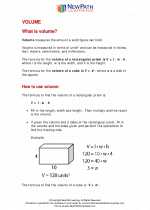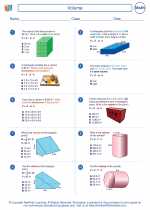Inverse Property
The inverse property is a fundamental concept in mathematics, particularly in the study of operations such as addition, subtraction, multiplication, and division. The inverse property states that for any given operation, there exists an inverse operation that, when applied to the result of the original operation, returns the original value.
Addition and Subtraction
For addition and subtraction, the inverse property is demonstrated by the fact that adding a number and then subtracting the same number returns the original value. For example:
5 + 3 = 8
8 - 3 = 5
In this case, addition and subtraction are inverse operations. The same principle applies to subtraction and addition:
8 - 3 = 5
5 + 3 = 8
Multiplication and Division
Similarly, for multiplication and division, the inverse property is evident in the relationship between these operations. Multiplying a number and then dividing by the same number returns the original value. For example:
4 x 6 = 24
24 ÷ 6 = 4
And division and multiplication are also inverse operations:
24 ÷ 6 = 4
4 x 6 = 24
Study Guide
To understand and apply the inverse property, it's essential to practice working with different numbers and operations. Here are some key points to keep in mind:
- For addition and subtraction, adding and then subtracting the same number yields the original value.
- For subtraction and addition, subtracting and then adding the same number yields the original value.
- For multiplication and division, multiplying and then dividing by the same number yields the original value.
- For division and multiplication, dividing and then multiplying by the same number yields the original value.
It's important to understand and recognize the inverse relationship between operations in order to solve equations and manipulate expressions effectively. Practice using the inverse property with various numbers and operations to reinforce your understanding.
.



